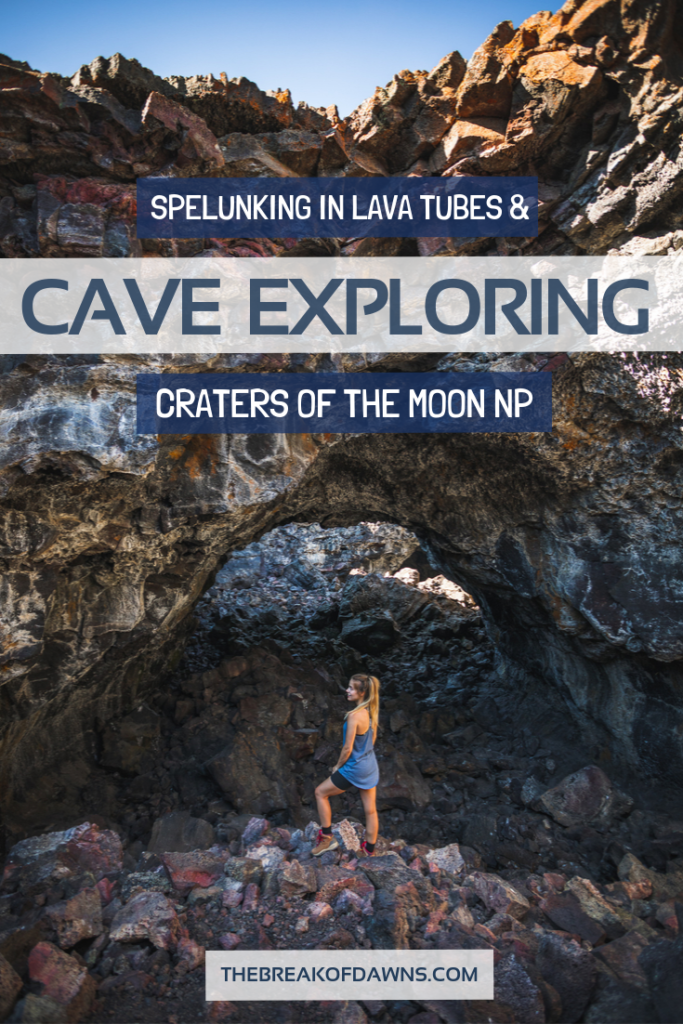
Cave spelunking, one of my favorite exploration pastimes! And what better place to do it in a National Park full of 10,000 year old lava tubes? The caves of Craters of the Moon National Park in Idaho is one incredible exploration and is one of the more otherworldly places I’ve visited; it’s literally like walking on the moon.
Read More: Spending One Day in Craters of the Moon National Park
Fields full of ashy-colored rocks blown from 6,000 foot cinder cones span the high desert plains. The real treat though is hidden underground in tunnels made from flowing hot lava.
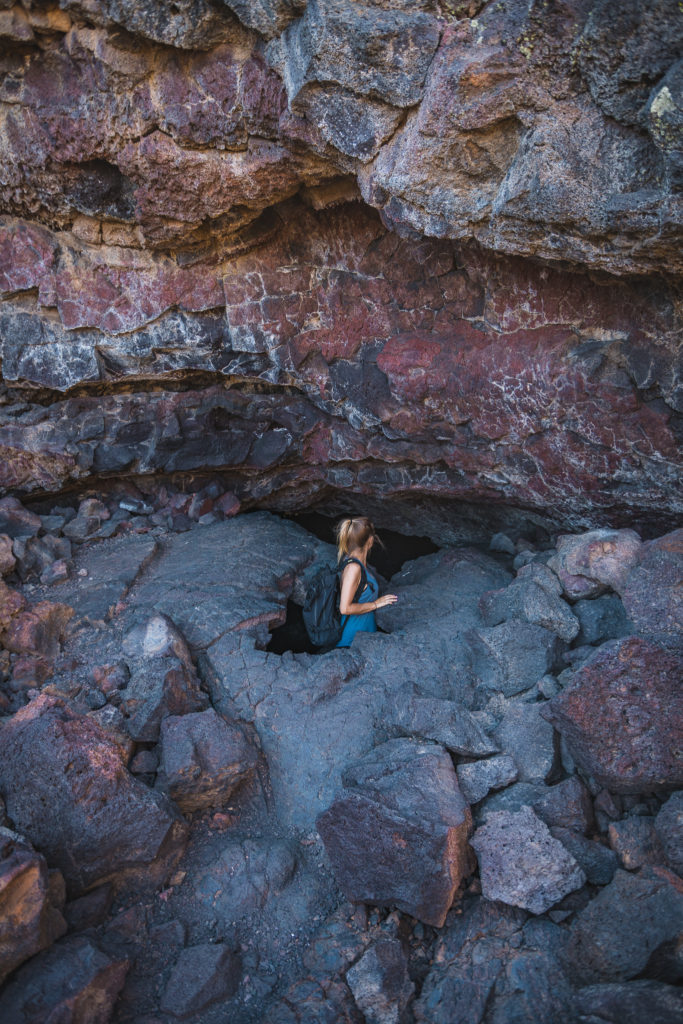
What is Cave Spelunking?
I talk about spelunking a lot on my social media and am surprised when people ask if it’s a made up word. Nope, it’s legit and here’s the official definition for those who’ve never heard of it:
Spelunking: noun; the exploration of caves, especially as a hobby
Although I’m definitely an amateur, I’ve spelunked in caves a lot in my life. Hailing from the midwest USA, cavern exploring is an attraction on a short list of things to do. In fact, Mammoth Caves in Kentucky is the longest cave system in the world. Whether exploring them by boat like in Bluesprings Cavern in Bedford, Indiana or on foot like in the Neolithic caves of Xemxija, Malta, spelunking is a fun way to get to know the underground of our earth.

*You must obtain a permit from the Visitor Center before exploring the caves in Craters of the Moon NP. Read more below or find out more here*
The Caves of Craters of the Moon National Park
Craters of the Moon National Park currently has 5 different caves you can explore on your own. These caves were created by lava flows that hardened on the outside but continued flowing on the inside.
“The Craters of the Moon landscape is more than just surface volcanic features. Below ground there is a dynamic underground world where fiery rivers in hardened, self-insulating tubes once flowed for miles without losing heat.” – NPS
The trailheads for the caves are accessible via the one-way Loop Road. Buffalo Cave is located off of the first spur road for the parking area of the Tree Molds Trail/Broken Top Loop Trail. The last 4 caves can be found on the Caves Trail near the end of the Loop Road.
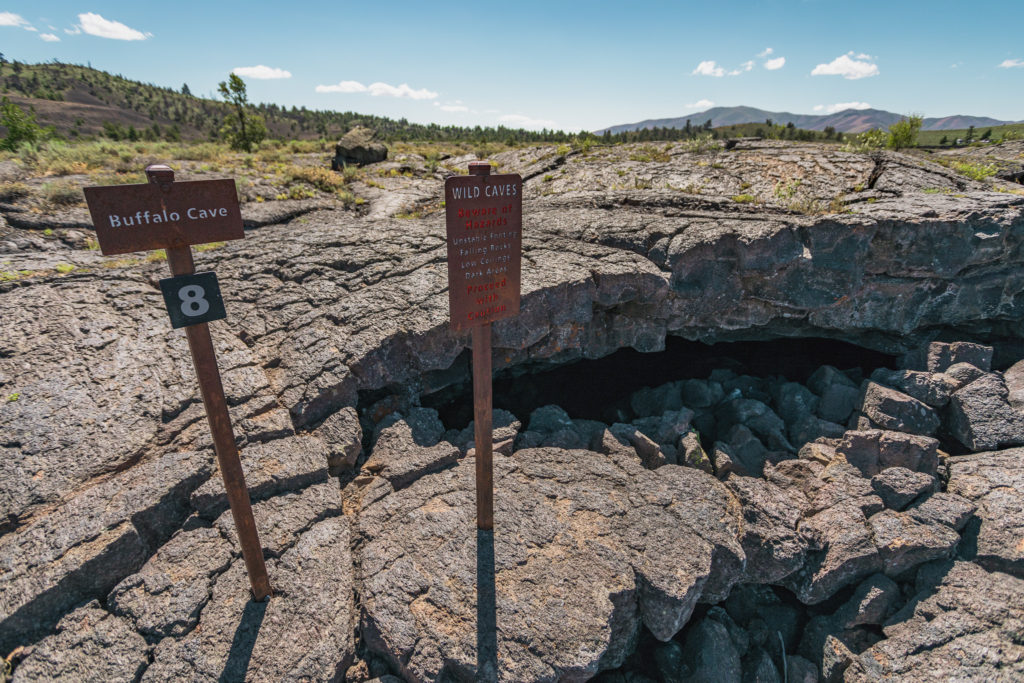
Buffalo Cave
Accessing the Buffalo Cave entrance is found by hiking a half mile counter-clockwise on the Broken Top Loop Trail. Beginning with a trek around the freshest lava on the Snake River Plain, the entire loop is 1.8 miles. Upon reaching the smooth leveled cinder rocks a half mile in, follow the metal stakes for the path. To the right, spot the danger and bat signs that mark the entrance to the cave. You can walk about a quarter mile into the cave before taking a right and heading deeper in.
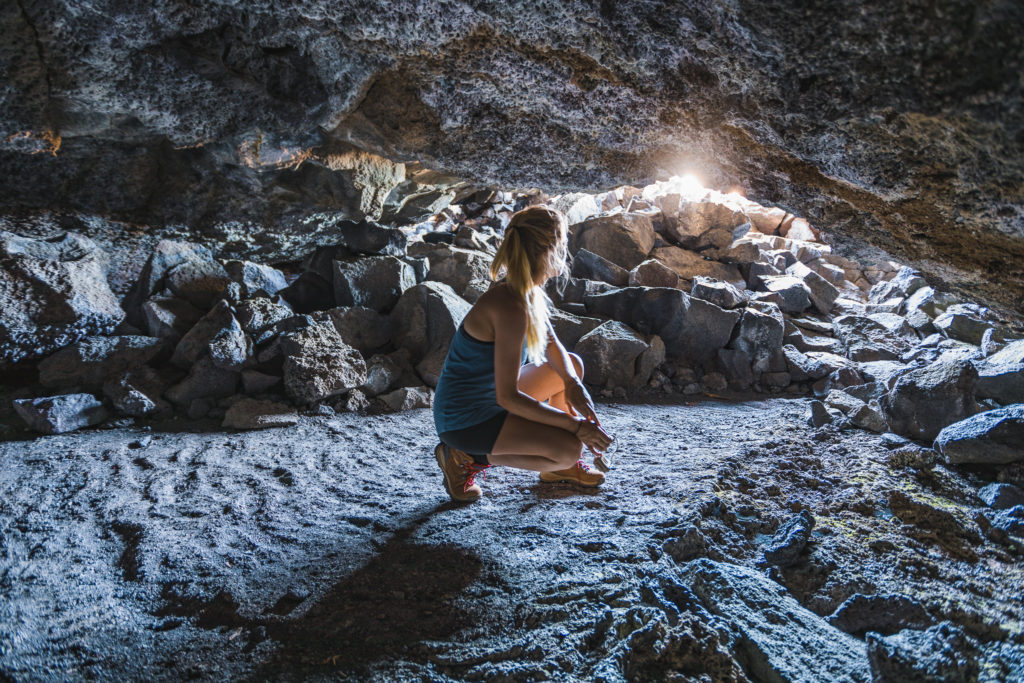
Be sure to have a headlamp and a flashlight to enter this cave! It’s very dark inside and pretty chilly too. A jacket and a helmet for protection would be a good idea as well. The Buffalo Cave is rated by the NPS as difficult with a tight, rocky entrance and low ceilings.
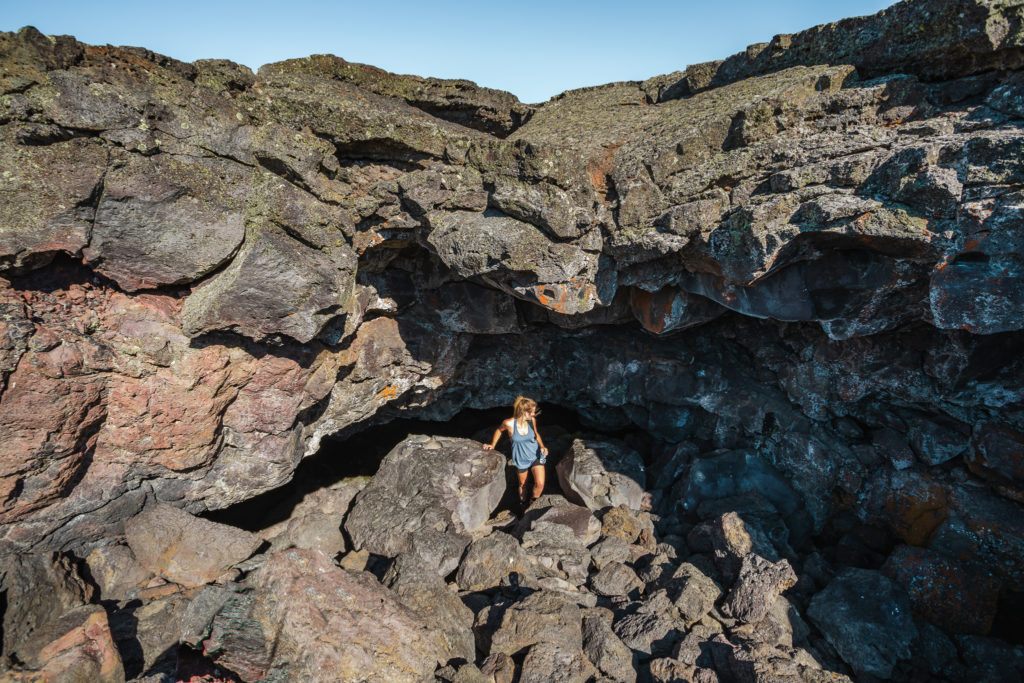
Dew Drop Cave
The first cave you’ll come upon on the Caves Trail is Dew Drop Cave. Although it’s only just a room inside, it’s an appropriate warm-up for what’s to come on the next explorations. Take some time to study the incredible colors found down here due to the drops of water seeping on the walls and ceiling.
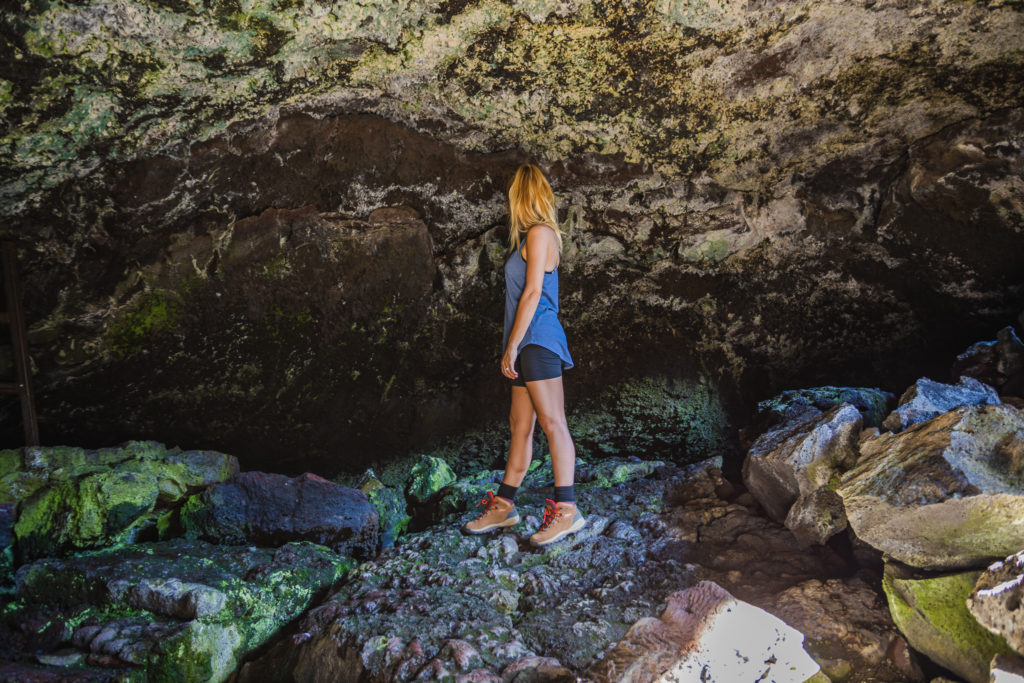
If you have the right equipment and some gull, the west side of the cave has a skylight exit to try out. With the unstable ceilings and wet ground, we decided against it and climbed out the way we came in through the wide slot.
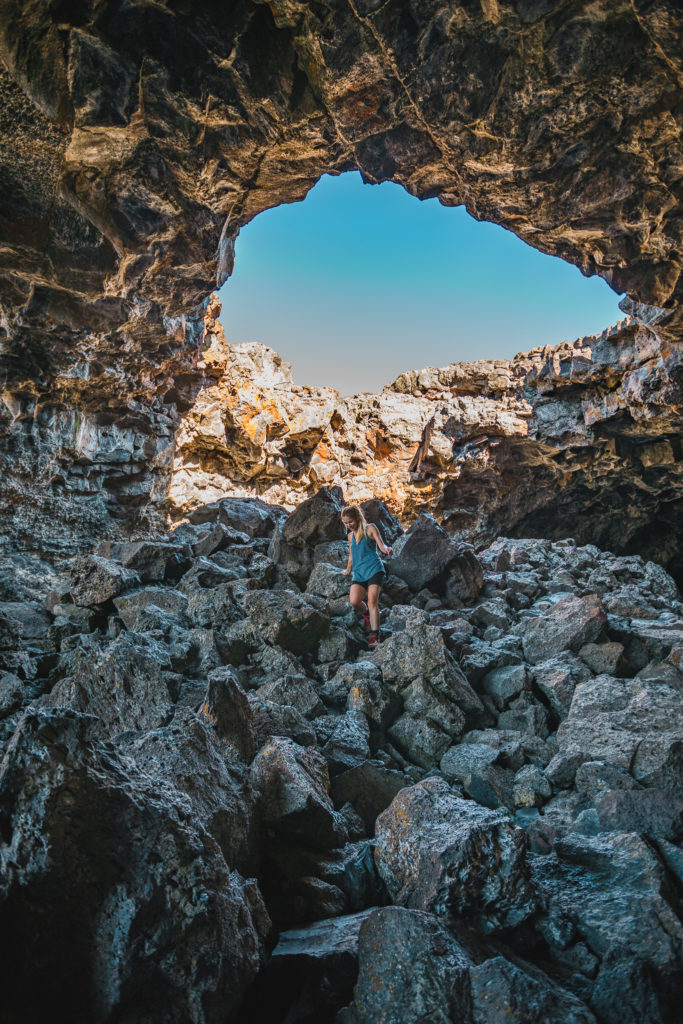
Indian Tunnel
Only a half mile to the south on the paved path is your next spelunking cave adventure. Save your headlamp batteries for this hike! The largest of all the tunnels at 800 feet long, Indian Cave rises 30 feet tall with large skylights for the sun to peek in. After climbing down the set of stairs, scramble over the lava rock and continue exploring deeper into the tunnel.
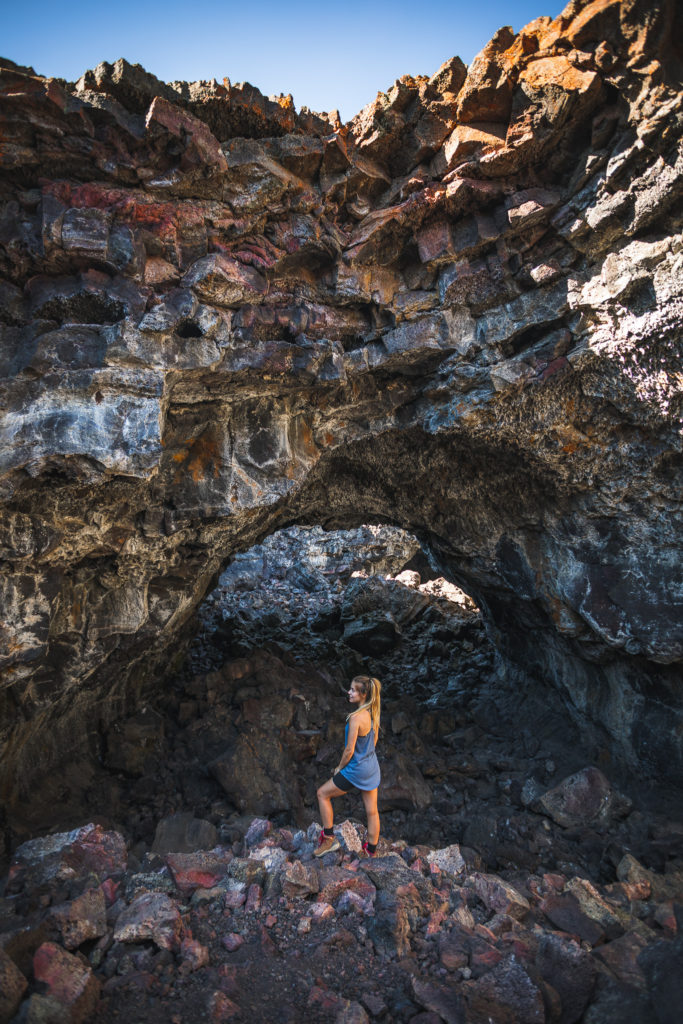
Coming out on the other side is another massive skylight with rocks in all sorts of crazy shapes and colors. With only another quarter mile to go down a darker corridor, you’ll find the new exit for the cave. Follow the rock cairns back across the lava field for about 0.2 miles to reach the paved path again.
When in doubt, follow the light!
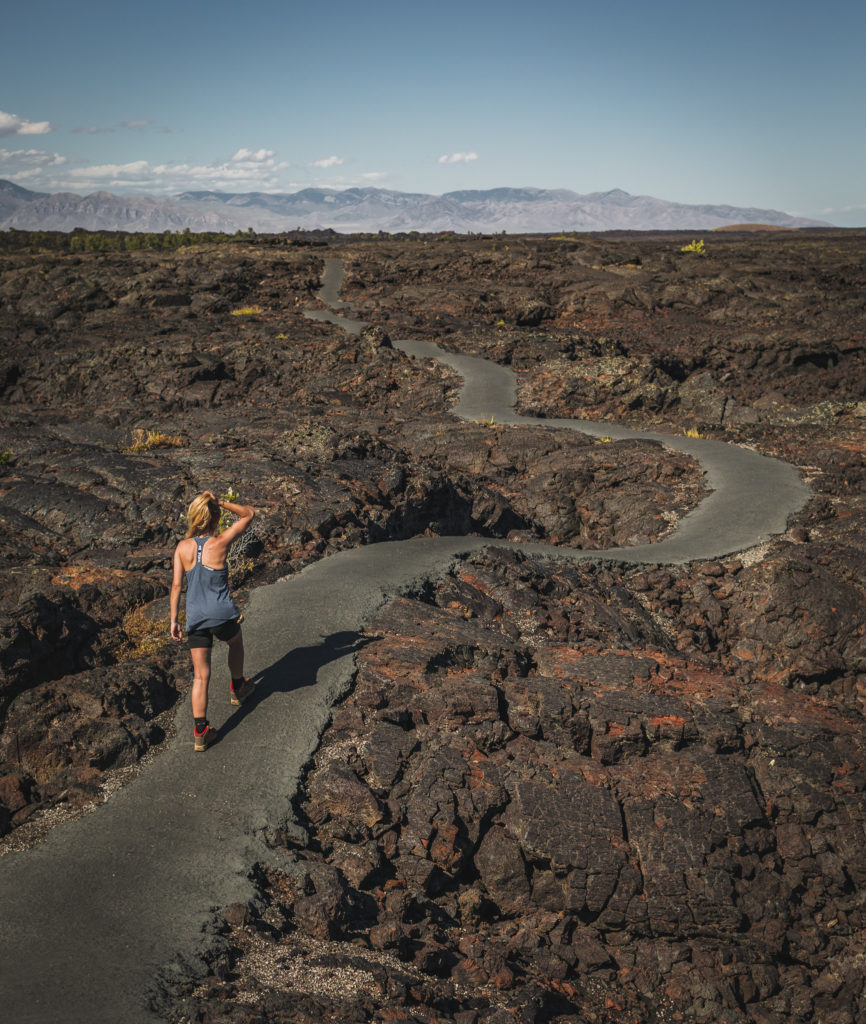
Boy Scout Cave
Leading down the paved path over the lava fields, the entrance to the most difficult cave appears, the Boy Scout Cave. With a very challenging entrance and cold, dark, wet conditions on the inside, this cave exploration isn’t for the faint of heart.
Our backpacks prevented us from fitting into the cave’s entrance, it’s that narrow. Because of the collapse at the entrance, only two small crevices are open, leading in different directions. The smallest entrance opens up to a chamber and a very small crawl space continuing towards a back exit. The other direction heads in even further to the cave. Beware that the Boy Scout Cave is very cold and dark, most likely having ice inside which creates a slippery surface.
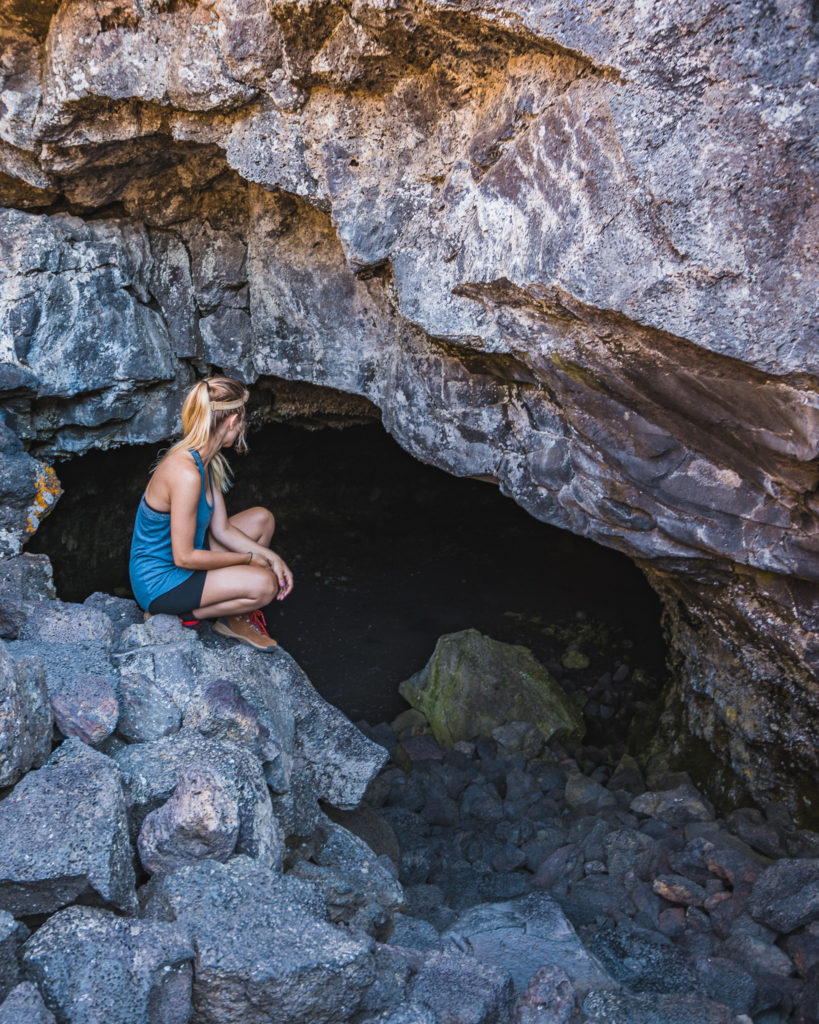
Beauty Cave
At the end of the Caves Trail is a bit of an easier entrance to Beauty Cave. With large boulders and an obvious opening, this spelunking opportunity is rated as moderate. Once entering the cave, the temperature drops almost immediately but the high ceilings allows for brightness to come in. If you explore any further, you will definitely need a flashlight or headlamp for this area. At the back of the chamber is a sign warning visitors of unsafe conditions so be sure to turn around at this point.
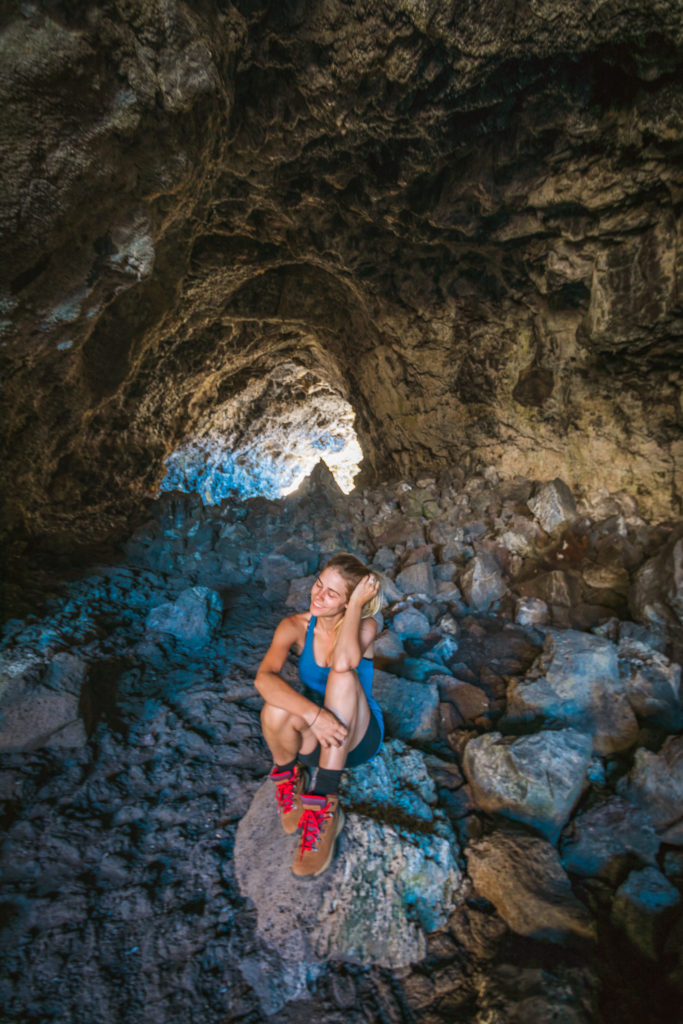
Tips for Spelunking in the Caves of Craters of the Moon National Park
Obtain a Permit
Due to the high risk of contaminating the caves with white-nose syndrome, you are required to obtain a permit at the Visitor Center before spelunking in the caves. Since 2005, the U.S. has experienced more than 7 million bat deaths because of the fungus. While humans aren’t susceptible to it, we can potentially be carrying it on our clothing or shoes.
To read more about white-nose syndrome and how to help protect the bats, click here.
Wear Appropriate Clothing
As with every hike, be sure to have your backcountry essentials handy while hiking, especially for appropriate clothing. Spelunking in Craters of the Moon will require you to scramble over sharp rocks in tight spaces so I’d recommend wearing some sort of long pants or sleeves.
You may be thinking, ‘But you’re in shorts & a tank?’ In my defense, I had no idea I’d be spending the day spelunking when we arrived so I had to deal with the scrapes! Having closed-toed shoes are also pretty necessary for spelunking too, as well as some sort of headgear, like a helmet, for protection.
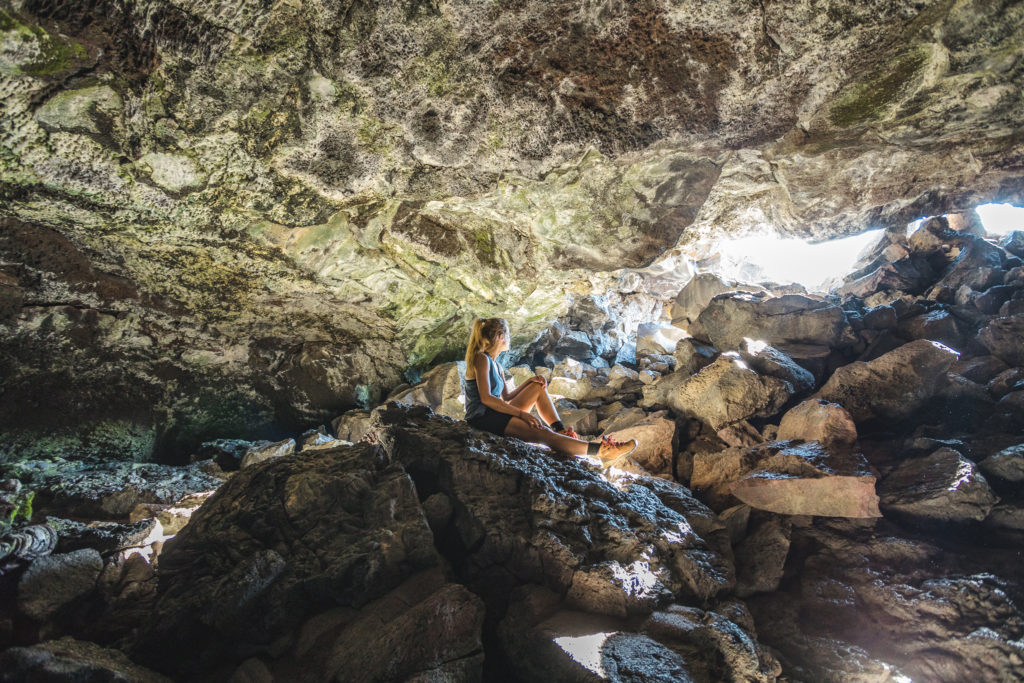
Lighting is a Must
Don’t rely on your phone light to get you by while exploring in the caves. In your backcountry essential pack, bring along headlamps for hands-free lighting with a hand-held flashlight as a back up.
Read More: The 8 Backcountry Essentials You Shouldn’t Hike Without
Bring a Friend
Caves can be dark and scary so the best piece of advice I could give is to bring a friend. Many risks pose themselves while exploring caves, like a fall or getting lost, so it’s best not to explore them alone.
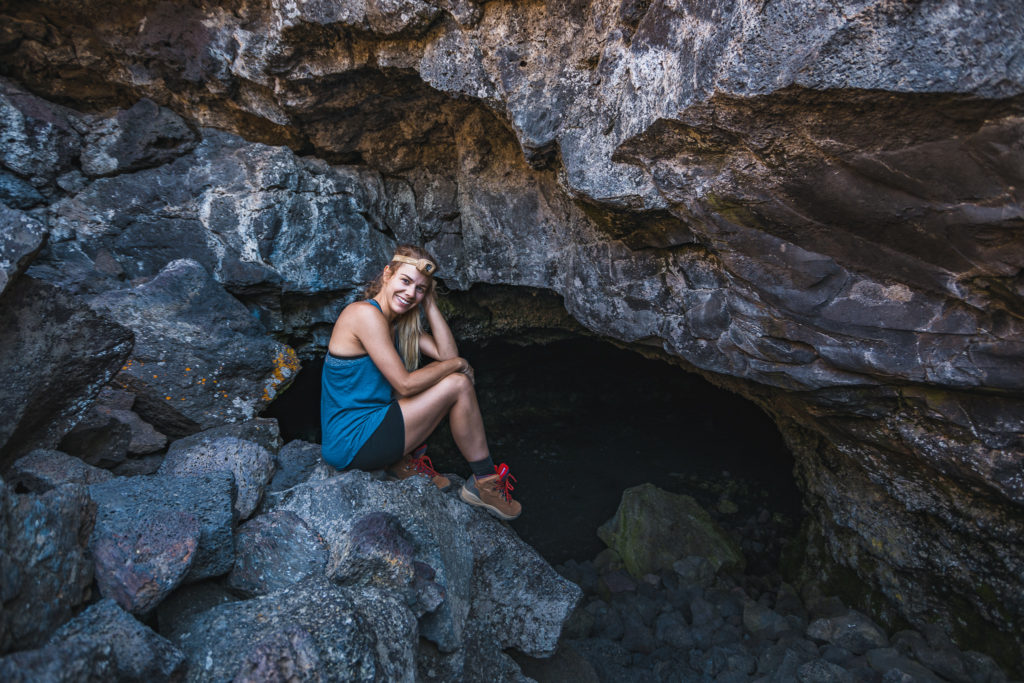
Leave No Trace
As always, Leave No Trace while spelunking in the caves. Leave behind food and trash, avoid using the bathroom inside, stay on available trails, don’t touch the formations and leave nothing but footprints.
Read More National Park Posts HereBefore heading out on trails, it’s imperative that you’re familiar with the “Leave No Trace” principles.
Read More: Leave No Trace: The 7 Rules of the Backcountry
Learn more about Leave No Trace on their website here.
Like This Post? Pin It!
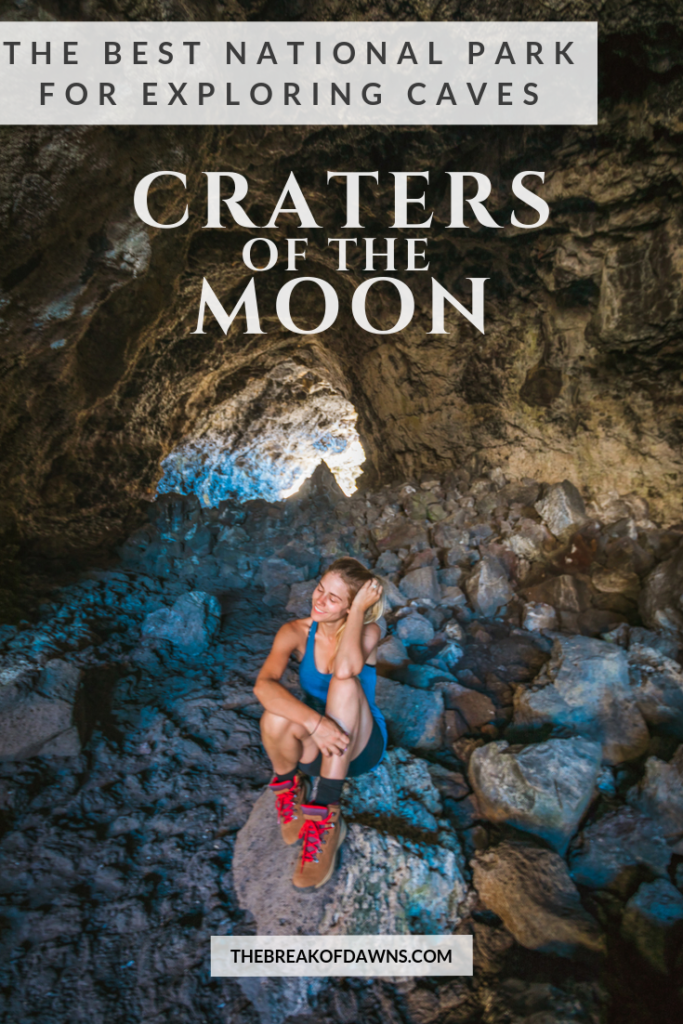
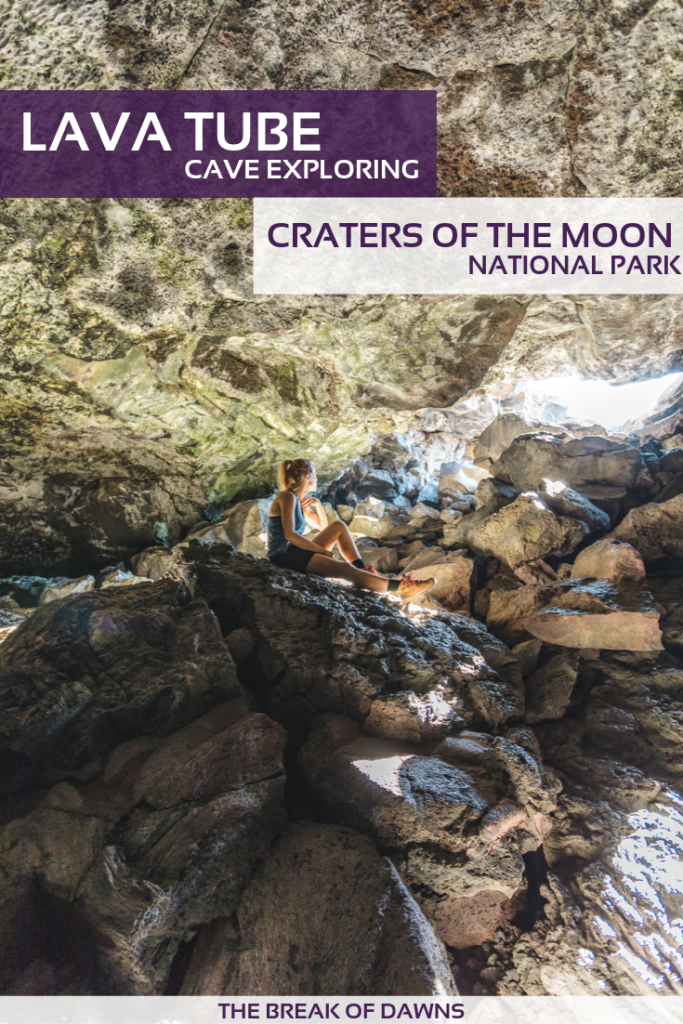
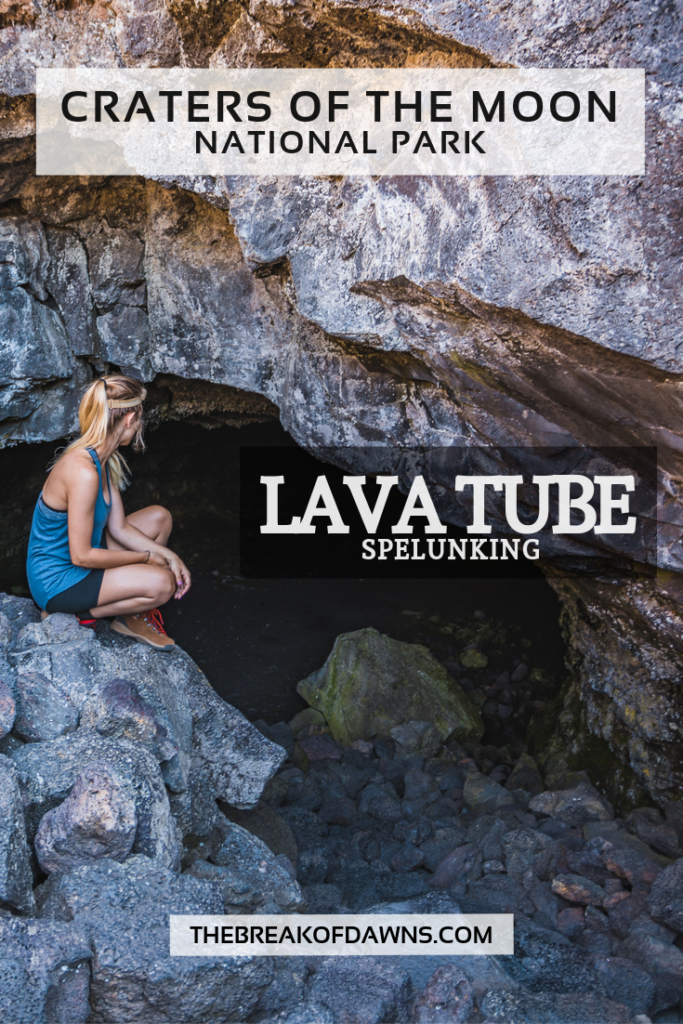

| This post contains affiliate links. At no extra cost to you, if you purchase one of these products I may receive a small commission. This helps me maintain my blog as a free space to you. Check out my Disclaimer for more info.

